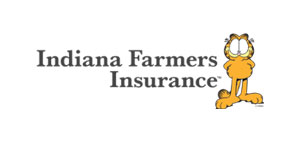Water cleanup, also known as water damage restoration or water mitigation, is the process of removing and restoring a property that has been impacted by water damage. This comprehensive procedure involves various steps, including water removal, extraction, drying, cleaning, sanitizing, and repairing damaged materials. Water damage can be classified into three categories – Category 1 (clean water), Category 2 (greywater), and Category 3 (blackwater). To ensure the best results, it is crucial to enlist the help of professional restoration specialists who are equipped with the expertise and tools to handle water damage effectively.
Key Takeaways:
- Water cleanup, also known as water damage restoration or water mitigation, involves the removal and restoration of a property affected by water damage.
- The process includes steps such as water removal, extraction, drying, cleaning, sanitizing, and repairing damaged materials.
- Water damage can be categorized into three classes based on the level of contamination.
- To ensure a smooth restoration process, it is advisable to hire professional restoration specialists with expertise in water damage cleanup.
- Professional restoration services like SERVPRO can handle the complete restoration, including structural repairs and mold mitigation.
Water Cleanup Techniques and Best Practices
Successful water cleanup involves a series of techniques and best practices, including water removal, extraction, drying, cleaning, sanitizing, and repairing damaged materials. When faced with water damage, it’s important to act quickly to prevent further destruction and potential health hazards. Qualified professionals, like Elite Remediation & Services, are equipped with the knowledge and expertise to efficiently restore your property to its pre-damaged condition.
To begin the cleanup process, water removal is essential. Using specialized equipment, professionals will extract standing water from the affected area. This step helps prevent additional damage to structures and belongings, as well as mitigate the risk of mold growth.
Once the water is removed, the drying process begins. Powerful air movers and dehumidifiers are strategically placed to expedite evaporation and reduce moisture levels. This step is crucial in preventing further structural damage and inhibiting mold and mildew growth.
After the area is dried, thorough cleaning and sanitizing are necessary to ensure a safe and healthy environment. Professional technicians use appropriate disinfectants to eliminate bacteria, viruses, and other contaminants that may have been introduced by the water damage. Contaminated materials, such as carpeting and insulation, may need to be removed and replaced to prevent further health risks.
Categories of Water Damage:
| Category | Description |
|---|---|
| Category 1 (Clean Water) | Water originates from a clean source, such as a broken pipe or sink overflow. It poses no immediate health risks. |
| Category 2 (Greywater) | Water contains significant contamination, such as from a dishwasher or washing machine. It may cause illness if ingested or in contact with the skin. |
| Category 3 (Blackwater) | Water is highly contaminated and carries bacteria, sewage, or other hazardous substances. It poses severe health risks and requires professional handling. |
Water damage restoration is the final step in the cleanup process. It involves repairing and restoring the affected areas to their pre-damaged condition. This may include removing water-damaged structural elements, replacing flooring and drywall, mitigating mold growth, and testing for moisture to ensure thorough restoration. By entrusting your water cleanup to professionals, you can have peace of mind knowing that the restoration process will be carried out efficiently and effectively.
Remember, when facing water damage, it’s crucial to act promptly and seek professional assistance. Water cleanup should never be taken lightly, as the consequences of inadequate restoration can be long-lasting and costly. Don’t hesitate to reach out to experienced professionals who can handle the cleanup process with efficiency and expertise.
Conclusion
In conclusion, water cleanup, also known as water damage restoration or water mitigation, is a crucial process that involves various techniques and best practices to restore properties affected by water damage. Whether caused by floods, leaks, or plumbing issues, water damage can be detrimental to homes and buildings if not addressed promptly and properly.
Water cleanup typically begins with the removal of standing water and the extraction of moisture from affected areas. This is followed by the drying process, which helps prevent further damage and the growth of mold and mildew. Specialized equipment, such as dehumidifiers and air movers, are utilized to accelerate the drying process.
Once the water is removed and the area is dried, the next step involves thoroughly cleaning and sanitizing surfaces to eliminate any potential contaminants. Damaged materials, such as flooring and drywall, may need to be repaired or replaced to restore the property to its pre-damaged condition. In cases where mold growth is detected, remediation strategies may also be implemented.
It is important to note that water damage can be categorized into three types. Category 1 refers to clean water damage, caused by sources such as broken pipes or overflowing sinks. Category 2, known as greywater, includes water that may contain contaminants, such as from dishwasher or washing machine leaks. Category 3, known as blackwater, is the most severe and hazardous, often resulting from sewage backups or flooding.
FAQ
What is water cleanup called?
Water cleanup is often referred to as water damage restoration or water mitigation.
What processes are involved in water cleanup?
Water cleanup involves processes such as water removal, extraction, drying, cleaning, sanitizing, and repairing damaged materials.
How is water damage classified?
Water damage can be classified into three categories – Category 1 (clean water), Category 2 (greywater), and Category 3 (blackwater).
What is the purpose of water damage restoration?
Water damage restoration is done after water mitigation to repair and restore the home to its pre-damaged condition.
What tasks are involved in water damage restoration?
Water damage restoration may involve removing water-damaged structural elements, replacing flooring and drywall, mitigating mold growth, and testing for moisture.
















